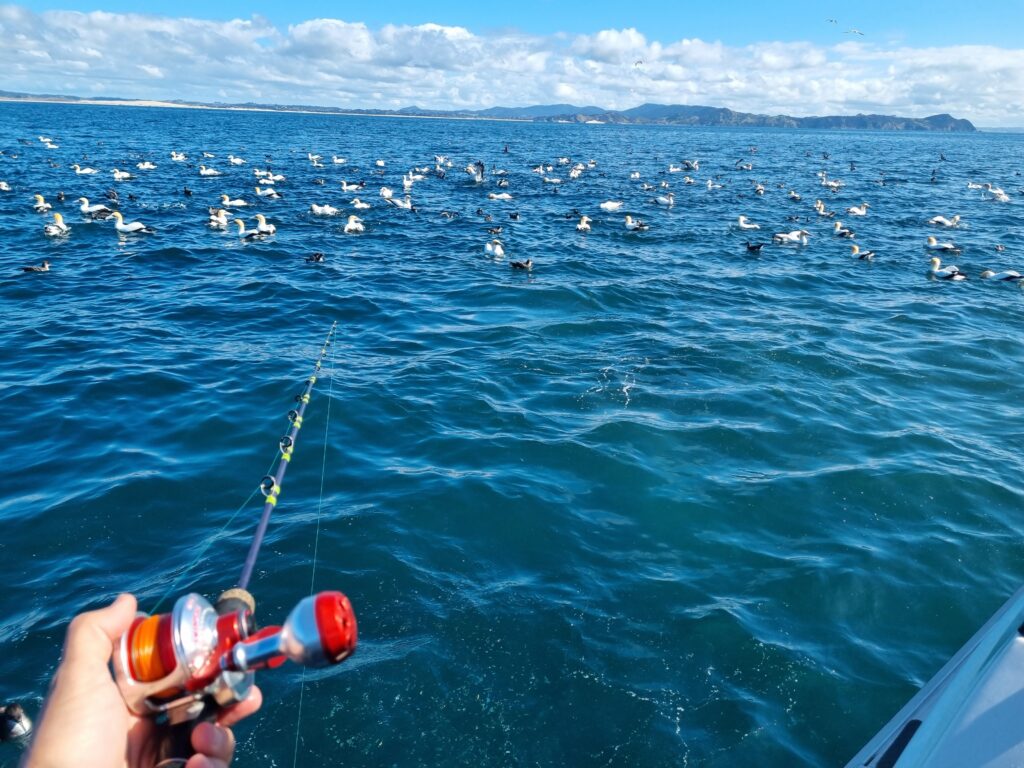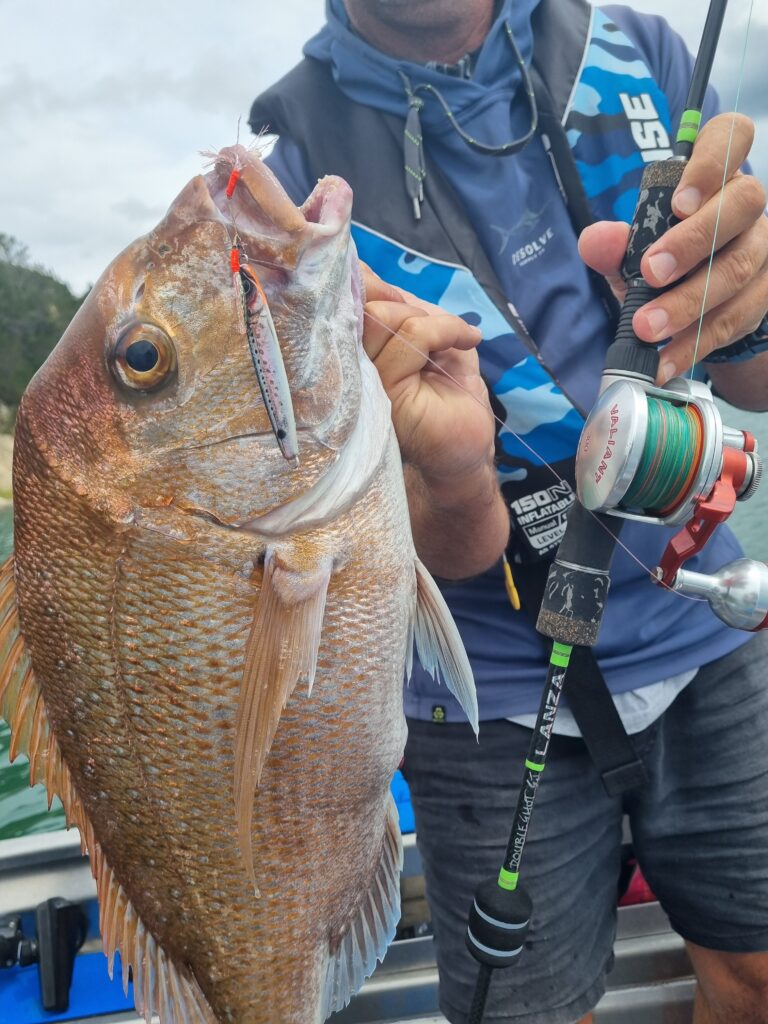With the much-anticipated arrival of springtime, we see longer daylight hours, with warmer weather and water temperatures, which allows keen anglers better fishing out on the water.
Most Kiwis are relieved to see the back of winter and springtime gets everyone in a better mood as the warmer weather arrives. There are also many anglers who get excited with spring’s arrival as they are eager to get back out on the water in force and make use of daylight savings to enjoy the improved fishing.
Springtime is really an awakening of sorts out on the ocean and sees masses of baitfish schools such as pilchards and anchovies arrive, that typically turn up in Northland off Bream Bay and then moves down the coastline and right throughout the Hauraki Gulf. These large baitfish schools of course attract the larger predators in numbers that anglers are looking to catch.
WORKUPS
During spring, a common daily occurrence in the gulf is a fish workup, where gannets rain down from above into the baitfish schools, with dolphins and even whales feeding amongst the chaos. These workups are an amazing spectacle of nature that all anglers need to experience once. The snapper fishing can be right up there as some of the most action packed you can ever encounter, but there are a few key things to remember.
The best workups are those when the gannets start diving but they need the help of the dolphins. There are large pods of common dolphins that reside in the gulf and these fast-moving mammals are key for rounding up the pilchards and drive them up to the surface, where they hold the baitfish so the gannets can dive from above.
The resulting workup then attracts the larger fish with the noise and scent of blood bringing kahawai, snapper, and kingfish to the party. We always look to find dolphins and track them by shadowing along behind using the help of binoculars and no doubt the gannets will also be tagging along, waiting for them to find the pilchards.
If you locate a workup, remember don’t drive through middle of the action. Hang back and try to get in front of the workup by quietly moving in at low speed. You don’t want to put off the diving birds and dolphins to disturb their feeding.
We aim to fish ahead of the moving workup and drop our lures down, but often the better snapper fishing can be well behind the workup as the slower moving snapper feed on the wounded baitfish and leftovers on the bottom.
Keeping an eye our your sounder often is a must, to look for the fish sign hard on the bottom, this will typically be snapper targets but in workups they will even swim up off the bottom to eat batifish near the surface and we have been surprised to hook snapper while on the drop.

JIGS
Springtime fishing is one of the best times to break out your jigs as the schooling fish are hungry and attacking baitfish. Jigs resemble these small fish, and they offer a lot of benefits to anglers, as it means no time-wasting having to rebait after you land a fish. Simply unhook and then send your lure straight back down.
Let’s face it, bait and berley are not cheap anymore, and a single jig can catch many fish throughout the day so saving money. There are many types of jigs on the market but our go-to jig around workups are the slim designed jig that reach the bottom faster and have a quick action on the drop.
We take a range of colours and weights from 60-150gm, and the best action is to just lift them high off the bottom and let them drop back down, with their erratic action and flashing colours helping attract strikes. Snapper and kingfish love this style of jig.
Slow pitch jigs are another good option to deploy, they are also used by high lifting and dropping back, with their flutter action similar to wounded baitfish like pilchards falling from the workup action above.

SOFTBAITS
We have also had good success using softbaits on heavier jig heads from 1oz or heavier by drifting around workups. Choose a softbait with a longer tail or paddler style that big fish love. It is another good option to use in deeper water (30m+) when chasing workups and you can smear the tail with some Secret Sauce (pilchard flavour of course) and this helps your strike rates.
The softbait approach can even be left in the rod holder as the lure will be out the back as you work the jigs directly under the boat while drifting. Just remember to back off the drag as we have seen rods fly out of the holder when the reel’s drag was too high as a big fish pulled the rod and reel into the drink!
It is a good idea to ensure you take a pair of pliers on the boat, as these are invaluable when removing the tiny assist hooks on jigs from struggling fish. These little hooks love fingers and I have seen many anglers hooked badly when trying to remove jig hooks from stroppy fish without pliers. The small assist hooks also love the old school cord mesh nets and are a real pain in the butt to deal with when the fishing is firing and you waste fishing time trying to remove the hooks buried in the net. Invest in a quality rubber mesh net that will save you time and a lot of cursing.
Springtime snapper fishing can be epic, and you can quickly catch a boat load of fish. But remember they are gathering in numbers to spawn, so limit your catch, don’t catch your limit. Release healthy fish back and help the future stocks.



